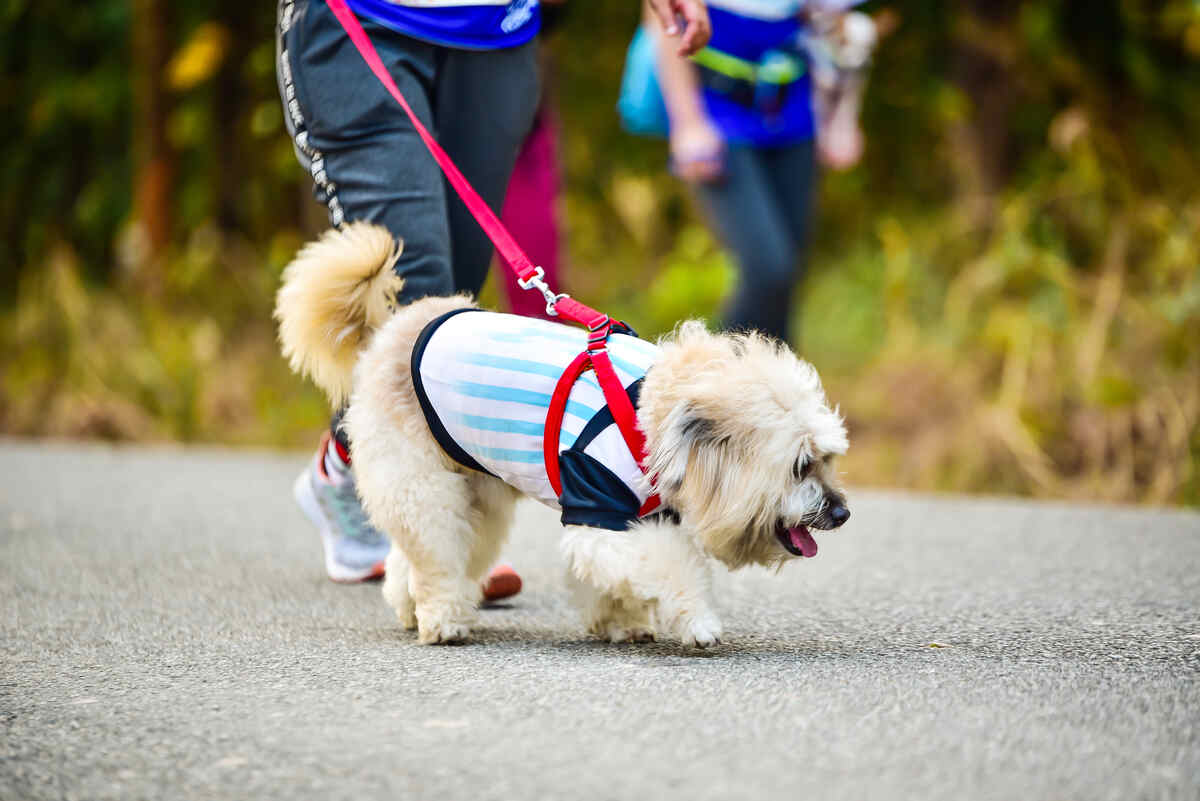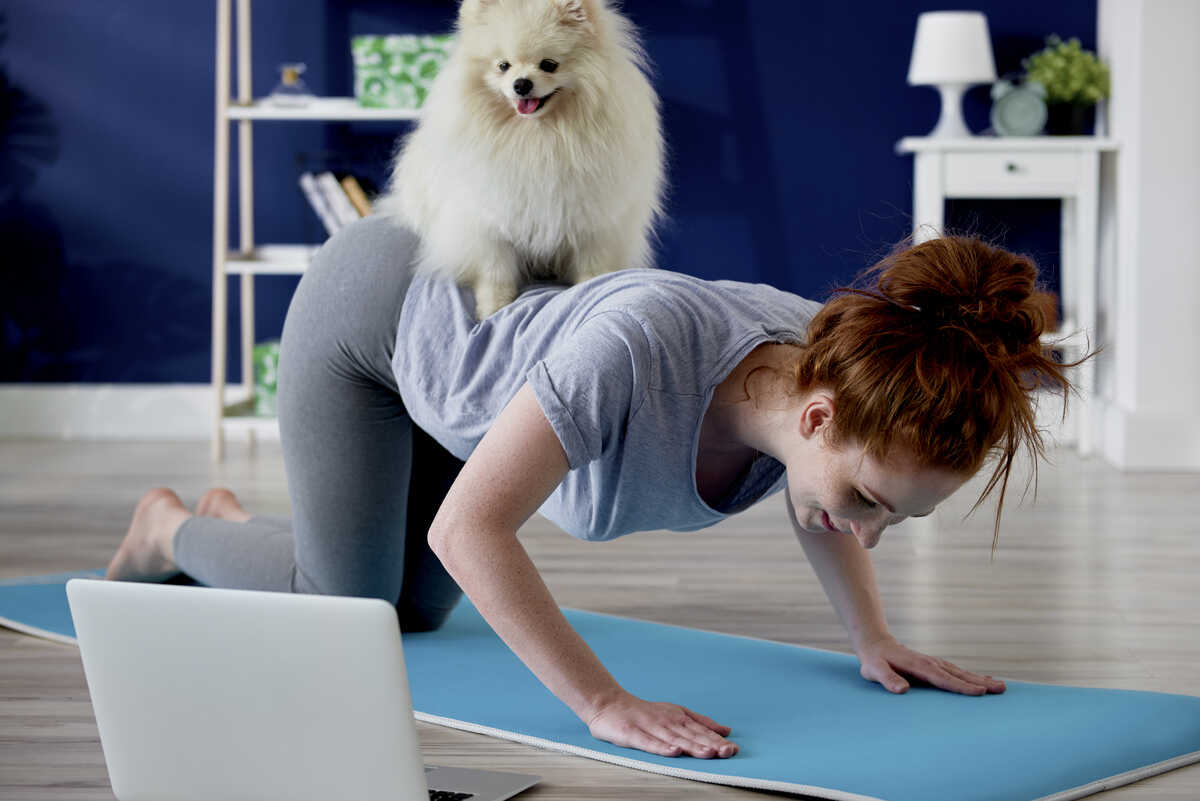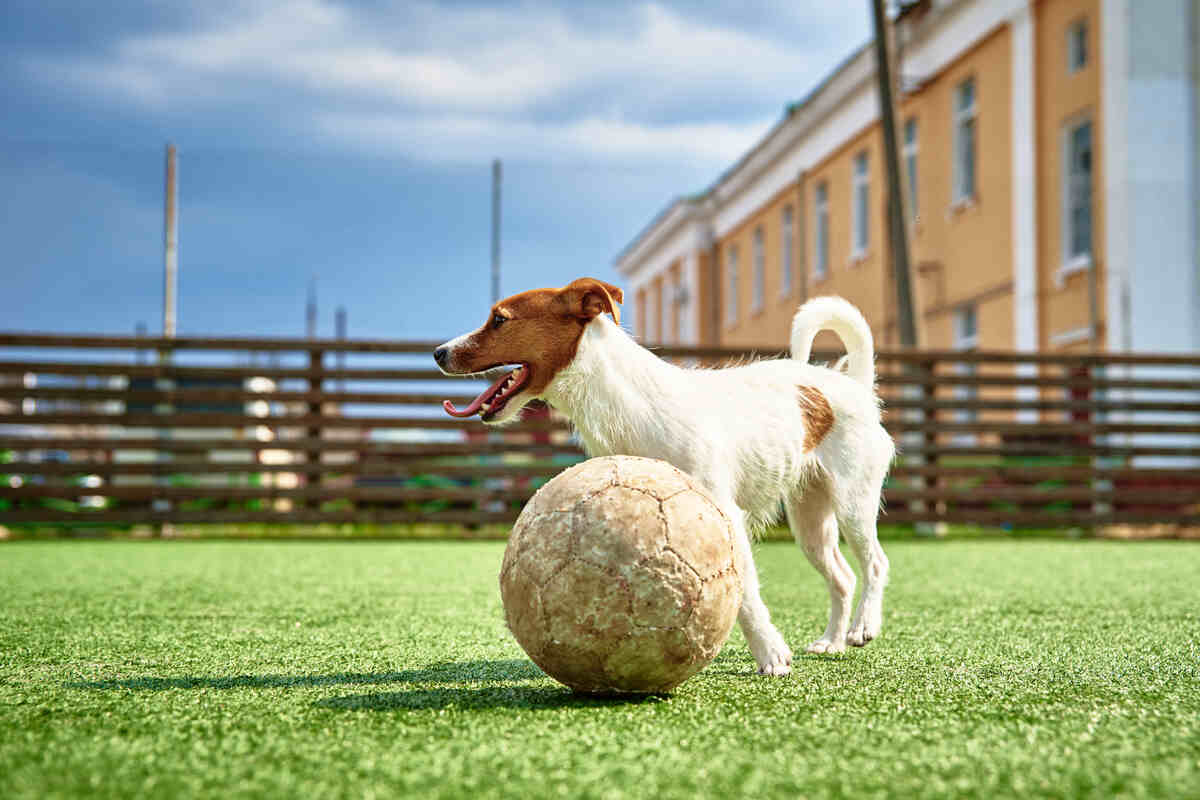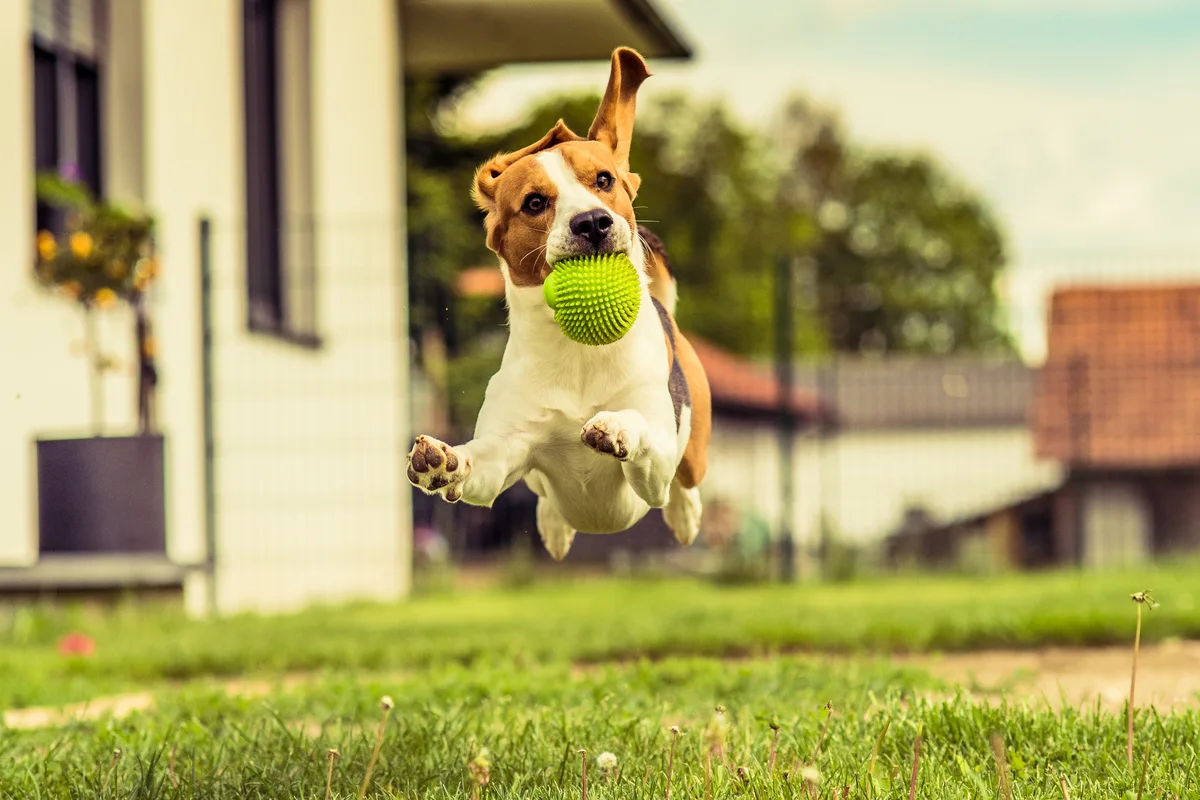The only bad workout is the one that didn’t happen, and that goes for our furry friends, too. Welcome to the ultimate guide on keeping your furry friend happy, healthy, and tail-waggingly active!
In this comprehensive journey through the world of dog exercise, we’ll explore everything from the benefits of regular exercise and activity levels to the risks of a sedentary lifestyle in dogs. As responsible pet owners, it’s time to dive into the secrets behind crafting the perfect exercise routine for your beloved canine companion.
How much exercise does your dog need? How can you make the most out of the experience? Keep reading to find out!
The Importance & Benefits of Exercise for Dogs
A tired dog is a happy dog. Regular exercise is the key to a contented and healthy canine companion. Here’s why.
1. Physical Activity: A Canine Necessity
Dog exercise isn’t just about burning off excess energy – it’s a cornerstone of their well-being. Just like humans, dogs benefit greatly from regular physical exercise. Dog exercise has many health benefits.
For example, it helps maintain their weight, keeps their joints limber, and strengthens muscles, contributing to their overall fitness level and reducing the risk of numerous health conditions that might onset otherwise.
2. Mental Exercise: Stimulating the Canine Mind
But it’s not just about the physical health! Mental exercise is equally vital. For dogs, just like us humans, having an exercise routine isn’t just a physical demand; it’s their daily adventure and mental enrichment.
When you clip on that leash and head out, you’re not just exercising your dog – you’re opening the doors to a whole universe of excitement, discovery, and mental stimulation. Imagine their brain as a treasure trove hungry for new experiences and challenges. That walk around the block or in the park? It’s not just about stretching their legs; it’s their daily mental workout.
Engaging your pup’s mind with activities prevents boredom, reduces anxiety, and enhances their cognitive abilities. It’s their daily dose of mental wellness, keeping them happy, content, and emotionally balanced. Every walk, every game of fetch – it’s an investment in their mental well-being.
3. Social Networking for Paws
Dogs are social creatures, just like us. Every encounter with another dog is a chance to practice their social skills, decipher body language, and understand canine communication. It’s like attending a networking event – meeting new ‘colleagues,’ making acquaintances, and learning the art of interaction.
Risks of Lack of Exercise: Potential Health Problems in Sedentary Dogs
A couch-potato pup might seem content, but inside, their body’s whispering a different tale of health risks. Inactivity in dogs isn’t just laziness; it’s a precursor to a host of health troubles waiting to knock on their door.
Here’s why they need those exercise sessions:
1. Cardiovascular Health Issues
Think of a lack of exercise as a fast-track ticket to heart issues for your furry companion. Inactive dogs are more prone to cardiovascular diseases, just like us. Regular activity keeps their heart pumping, improving their cardiovascular health and reducing the risk of heart disease.
2. Obesity & Weight-Related Risks
A sedentary lifestyle often leads to obesity in dogs. A dog’s body was built for movement, not stagnation. Lack of exercise can be a slow poison. Those extra pounds can burden their joints, leading to joint pain, arthritis, strains, and decreased mobility, as well as increase the risk of diabetes and invite a host of other health concerns.
Remember, it’s not about looking good – a healthy weight equals a healthier and happier pup!
3. Mental Health & Behavioral Issues
A lack of exercise can lead to boredom, higher stress levels, anxiety, and even depression in dogs. This can manifest through destructive behavior, excessive barking, or withdrawal.
4. Muscle Atrophy & Weakness
Without regular exercise, just like us, dogs lose muscle strength – muscles weaken and, eventually, even atrophy. This impacts their ability to move, jump, and play, leading to a decreased quality of life.
5. Digestive & Metabolic Disorders
Insufficient activity affects digestion and metabolism in dogs. It can lead to gastrointestinal problems and an increased risk of conditions like diabetes.
6. Weakened Immune System
Exercise stimulates circulation and boosts the immune system. Without it, dogs are more susceptible to infections and illnesses.
7. Shortened Lifespan
Ultimately, a sedentary lifestyle can significantly shorten a dog’s lifespan due to the multitude of health issues that arise from a lack of regular exercise. Regular exercise isn’t just about physical fitness; it’s the cornerstone of a dog’s overall well-being. It’s their way of staying healthy, happy, and vibrant throughout their lives.
Tailoring Exercise for Our Canine Companions: Amounts of Exercise Needed for Dogs

In the realm of dog exercise, pups have their own unique set of rules. It’s like a personalized exercise regimen, but instead of dumbbells and treadmills, it involves leashes, balls, and lots of tail-wagging excitement. But one size doesn’t fit all!
Each dog has its own fitness levels, energy reserves, and preferred activities. They’re not cookie-cutter gym-goers; they’re individuals with specific exercise needs.
How Long Should a Dog Exercise Per Day?
The ideal amount of dog exercise varies by breed and age. A good rule of thumb is aiming for at least 30 minutes of exercise to 2 hours of exercise per day, depending on your dog’s breed, size, and energy levels. For example, small and toy breeds, such as Chihuahuas, Shih Tzu, Yorkshire Terriers, or Pomeranians, get tired more easily and need less physical activity compared to larger breeds.
Aim for around 30 minutes to an hour of exercise per day for these little fur balls. Short walks, indoor play sessions, and engaging activities like hide-and-seek or fetch in the living room can keep them happily active without overwhelming their petite frames. Remember, their small size doesn’t equate to small exercise needs—they still benefit from regular movement to stay fit and mentally stimulated.
On the other hand, giant breeds like Great Danes, Mastiffs, or Saint Bernards have colossal energy reserves housed within their massive frames. These gentle giants require more extended exercise sessions to keep them happy and healthy. Plan for at least 1 to 2 hours of exercise per day for these larger-than-life companions
High-Energy Breeds and Their Exercise Requirements
High-energy breeds like Border Collies, Huskies, and Dalmatians need plenty of exercise to thrive. They crave activities that challenge them physically and mentally, requiring upwards of 2 hours of vigorous exercise daily to stay happy and healthy.
Intense vs. Low-Impact Exercise
Intense exercise for dogs is akin to a sprinter’s workout, designed to get their heart pounding and muscles working at their peak. It involves high-energy activities like vigorous play sessions, agility training, or running at the nearby park, tailored to meet the needs of breeds with boundless energy.
On the flip side, low-impact exercise for dogs is more like a gentle yoga session, focusing on movements that are easy on their joints and muscles. This includes activities such as leisurely daily walks, swimming, or slow-paced games, ideal for senior dogs, those recovering from injuries, or breeds prone to joint problems.
Both intense and low-impact exercises serve crucial roles in a dog’s fitness regimen, ensuring a balance between burning energy and maintaining joint health, catering to their individual abilities and stages of life.
Canine Exercise Routine: Different Types of Exercise for Dogs

Just as our ideal workout routine might involve yoga, weightlifting, or a morning run, dogs have their preferred activities and forms of exercise. Some may thrive on hours of fetch, while others prefer a stroll through the neighborhood.
The magic lies in finding the perfect fit for each furry friend!
Walks, Game of Fetch, and Other Outdoor Activities
The classic walk isn’t just an exercise routine! Regular walks offer a plethora of sniffing activities that satisfy their curious noses. It’s their version of browsing the internet, gathering information from the scents left behind by other animals, marking their territory, and decoding the neighborhood’s stories.
Games like fetch, frisbee, or hiking can also fulfill your dog’s exercise needs while deepening the human-dog connection. Moreover, these outdoor activities aren’t solely about exercise; they offer valuable opportunities for command training. Playing fetch, for instance, allows pet owners to reinforce commands like “fetch,” “drop it,” or “come,” making it a fun and practical training session.
Plus, they stimulate the dog’s mind while burning off excess energy. Whether it’s a stroll around the block or an exhilarating game of fetch in the park, these activities are essential for their physical health, mental well-being, and the invaluable bond they share with their human companions.
How Can I Exercise My Dog at Home? Indoor Exercises for Dogs When Weather is Poor
Rain, or shine, you can keep your pup active and give it a healthy daily dose of dog exercise! Indoor exercises for dogs are fantastic alternatives to keep your furry friend active and entertained within the comfort of your home, especially when the weather isn’t cooperating.
Try indoor games like hide-and-seek or setting up obstacle courses to stimulate both mind and body. If your home has stairs, utilize them for a mini workout. Encourage your dog to climb up and down under supervision to get their heart rate up. Engage in a friendly game of tug-of-war using rope toys. This activity not only provides physical exercise but also strengthens their jaws and teeth.
Food Puzzles and Mental Exercises for Dogs
Engage your pup’s brain with food puzzles or training sessions. Mental exercises are just as essential as physical ones and can tire them out as effectively. You can introduce food puzzles or interactive toys as little “brain games” that require problem-solving skills to obtain Little Chef natural treats. These mental exercises engage their minds and keep them focused while providing a tasty yet healthy reward.
Barking Up the Right Tree: Keep Your Pet Happy & Healthy with Tailored Dog Exercise

By now, you’re equipped with the tools to create an exercise plan that suits your dog’s needs perfectly. Remember, the key is a balance of physical and mental activities. So, get out there, play, walk, run, and keep your furry friend healthy and happy—one paw step at a time!
Whether it’s a game of fetch in the park or a puzzle-solving session at home, ensuring your dog gets plenty of exercise is a surefire way to ward off health issues, both physical and mental. And, after they’ve happily tired themselves out, what better way to restore their energy than by rewarding them with a natural, functional treat from Little Chef to let them replenish their vigor and recharge for more tail-wagging adventures ahead?
So, what are you waiting for? Let’s get those tails moving and wagging!

